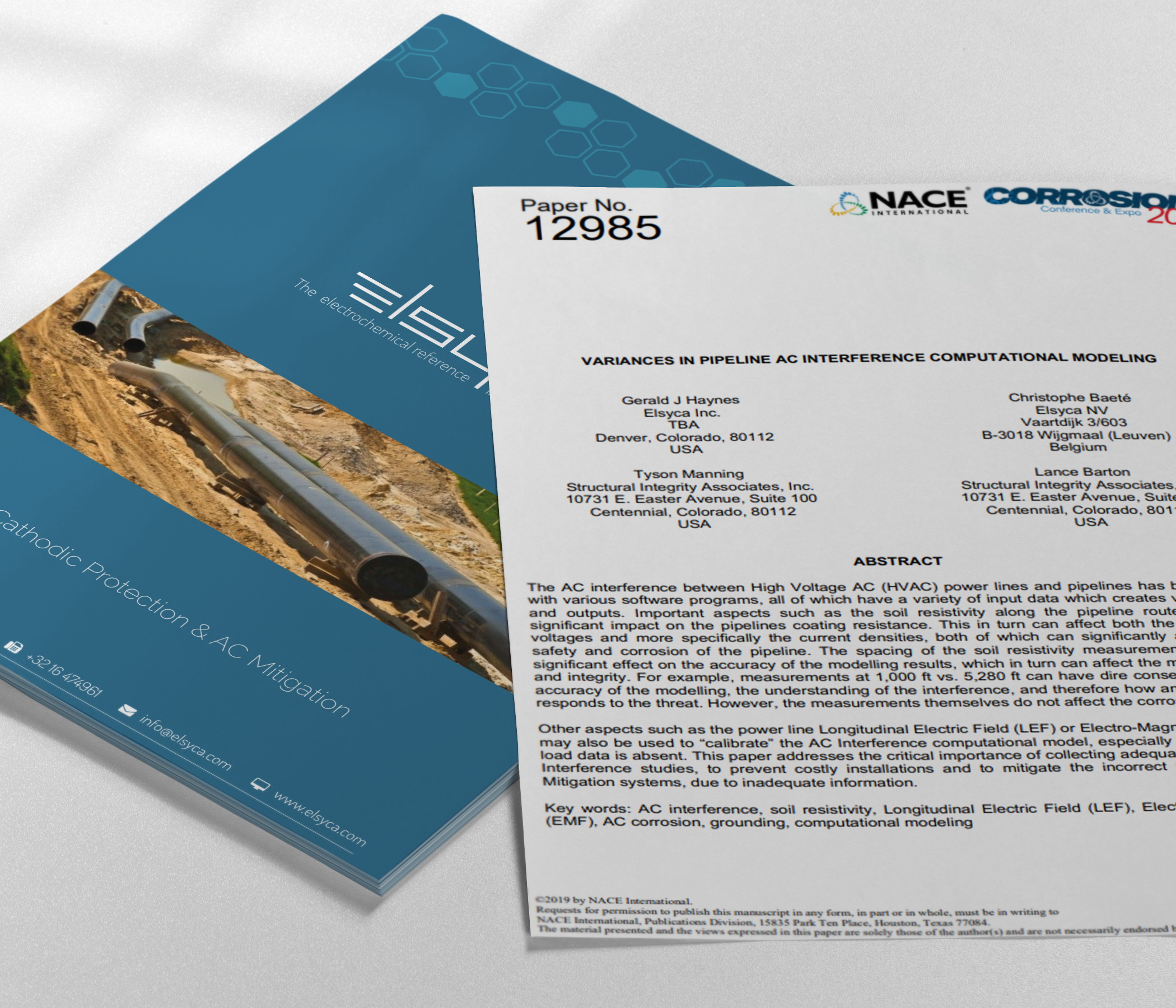
Variances in Pipeline AC Interference Computational Modeling (NACE 2019)
Smart surveys for AC corrosion prevention

Variances in Pipeline AC Interference Computational Modeling (NACE 2019)
Christophe Baeté, Gerald J. Haynes, Elsyca, Inc.; Tyson Manning, Lance Barton, Structural Integrity Associates, Inc.
Abstract
There are various ways of modelling pipeline and High Voltage AC (HVAC) AC interference, and depending upon the inputs and the pipeline calibration, this can result in various results and outputs, which can often be to the detriment of the pipeline owner/operator.
There are a number of important parameters, however, one of the most critical aspects pertains to the accuracy of locating and measuring the relative changes and values in the soil resistivity along the pipeline route. The soil resistivity can have a significant impact on the pipelines coating resistance, which can in turn, affects both the computed AC voltages and current densities. These can have a significant impact on both safety and the integrity of the pipeline, due to the AC corrosion current density. The other very important parameters, regarding the accuracy of the modelling pertain to both the power line LEF and EMF, measurements, together with the AC pipe to soil potentials, which are all used to “calibrate” the AC Interference, especially where powerline load data is absent.
Insufficient soil resistivity data can have a dire impact on the magnitude and location of the AC Mitigation system. When one compares the significant impact these measurements can have, when collected every 1,000ft versus every 5,280ft (1 mile), and how this is further exacerbated particularly where these soil resistivity measurement values change significantly along the route. The net result of the accuracy of the soil resistivity field data relative to the actual routing, affects the correct placement of the AC Mitigation (grounding), as well as the resistance of the grounding, which in turn has a cost implication to the asset owners and/or operators.
It is therefore critical that the correct locations and adequacy of data is collected for the AC Interference studies, to prevent costly installations and to mitigate the incorrect positioning of AC Mitigation systems, due to inadequate information.
Visit external link